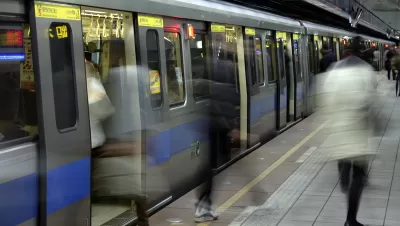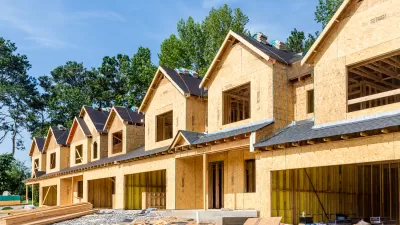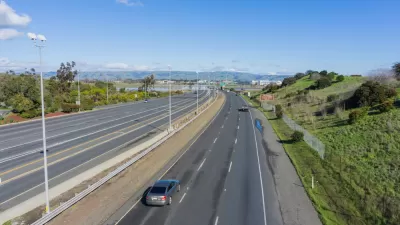Even as other middle class jobs disappear, the transportation sector continues to grow.

America's biggest city is growing, which means its new workers need new jobs. While manufacturing and other middle class jobs have been disappearing over the last decade, in New York transit jobs are flourishing.
According to an article in Next City by Johnny Magdaleno, "the transportation sector added jobs at a remarkable rate of 8.9 percent between 2013 and 2015." This data comes from a Center for an Urban Future published September 20. This finding has big implications for lower and middle class workers in New York and those without college degrees who can have trouble breaking into other sectors.
The report goes on to contrast transit jobs to other middle class jobs, "Transportation jobs pay an average of $53,417 a year, compared to $56,479 in manufacturing and $55,720 in construction. In 2015, transportation along with warehouse jobs employed 112,864 people throughout the city, while manufacturing stood at 77,213, or only about 2 percent."
The piece highlights a possible threat to these jobs in a lack of political support. Many have also speculated on what autonomous vehicles may mean for drivers. Finally, in anything to do with jobs population is a factor, and while many continue to debate whether or not millennials love cities, for now New York, for now this sector is booming.
FULL STORY: Booming Transport Sector Means More Middle-Class Jobs

Pennsylvania Mall Conversion Bill Passes House
If passed, the bill would promote the adaptive reuse of defunct commercial buildings.

Planning for Accessibility: Proximity is More Important than Mobility
Accessibility-based planning minimizes the distance that people must travel to reach desired services and activities. Measured this way, increased density can provide more total benefits than increased speeds.

Fair Housing Cannot Take a Back Seat to ‘Build, Baby, Build’
If we overlook fair housing principles in the plan to build US housing back better, we risk ending up right back where we started.

LA Metro Board Approves New 710 Freeway Plan
The newest plan for the 710 corridor claims it will not displace any residents.

Austin’s Proposed EV Charging Rules Regulate Station Locations, Size
City planners say the new rules would ensure an efficient distribution of charging infrastructure across the city and prevent an overconcentration in residential areas.

Making California State Parks More Climate-Resilient
A recently released report offers recommendations for keeping state parks healthy and robust, including acquiring additional land for conservation and recreation.
City of Costa Mesa
Licking County
Barrett Planning Group LLC
HUD's Office of Policy Development and Research
Mpact Transit + Community
HUD's Office of Policy Development and Research
Tufts University, Department of Urban and Environmental Policy & Planning
City of Universal City TX
ULI Northwest Arkansas
Urban Design for Planners 1: Software Tools
This six-course series explores essential urban design concepts using open source software and equips planners with the tools they need to participate fully in the urban design process.
Planning for Universal Design
Learn the tools for implementing Universal Design in planning regulations.


























